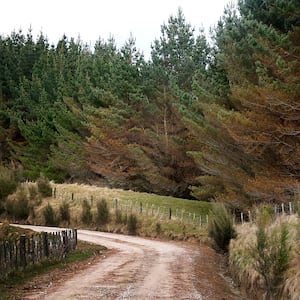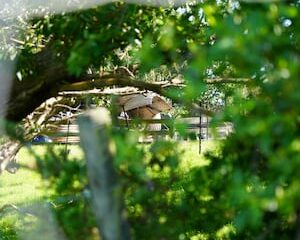World
Southland Faces Crisis as Wilding Conifers Spread Rapidly

The rapid expansion of wilding conifer pine trees has reached alarming levels in Southland, New Zealand, prompting officials to declare a significant land-use and biosecurity crisis. Approximately 2 million hectares of land are currently overrun by invasive species, including common varieties such as Pinus contorta and Douglas fir. Without effective management, untreated areas of wilding pines are projected to increase by about 5% annually, posing a substantial threat to the region’s ecology and agriculture.
The growth of these conifers is facilitated by their ability to disperse seeds over long distances—up to tens of kilometres—via wind. This characteristic complicates efforts by local teams aiming to eradicate infestations. According to the Ministry for Primary Industries, if left unchecked, wilding pines could cover a quarter of New Zealand’s total land area.
Funding and Resource Challenges
Despite the urgent need for intervention, funding uncertainties are hampering the battle against wilding conifers. Local officials have expressed concerns that the current financial resources are insufficient to mount an effective response. The lack of consistent support may lead to an escalation of the crisis, making it increasingly difficult to implement necessary control measures.
Several initiatives have been launched in an attempt to address the issue, but the scale of the problem continues to grow. Stakeholders, including environmental groups and government agencies, are calling for a comprehensive strategy to secure adequate funding and resources. The ongoing battle against these invasive species underscores the importance of collaboration among various sectors to protect Southland’s unique environment.
Impact on Biodiversity and Land Use
The proliferation of wilding conifers not only threatens native biodiversity but also disrupts land use for agriculture and forestry. Farmers and landowners are particularly concerned about the encroachment of these invasive trees, which can consume vital resources such as water and nutrients. The economic implications of this spread are significant, as agricultural productivity may decline in affected areas.
Efforts to control wilding conifers involve a combination of mechanical removal, chemical treatments, and community engagement. Recognizing the urgency of the situation, local councils are working to enhance awareness and mobilize community efforts. Public involvement can play a crucial role in managing the spread of these invasive species, as residents are often the first line of defense against new infestations.
As Southland grapples with this growing crisis, the collaboration of government, community, and environmental organizations will be essential in mitigating the impact of wilding conifers. The fight against these invasive species is not just about preserving the landscape; it is about safeguarding the future of the region’s agricultural viability and ecological integrity.
-

 World1 week ago
World1 week agoPrivate Funeral Held for Dean Field and His Three Children
-

 Top Stories2 weeks ago
Top Stories2 weeks agoFuneral Planned for Field Siblings After Tragic House Fire
-

 Sports3 months ago
Sports3 months agoNetball New Zealand Stands Down Dame Noeline Taurua for Series
-

 Entertainment3 months ago
Entertainment3 months agoTributes Pour In for Lachlan Rofe, Reality Star, Dead at 47
-

 Entertainment2 months ago
Entertainment2 months agoNew ‘Maverick’ Chaser Joins Beat the Chasers Season Finale
-

 Sports3 months ago
Sports3 months agoSilver Ferns Legend Laura Langman Criticizes Team’s Attitude
-

 Sports1 month ago
Sports1 month agoEli Katoa Rushed to Hospital After Sideline Incident During Match
-

 World2 weeks ago
World2 weeks agoInvestigation Underway in Tragic Sanson House Fire Involving Family
-

 Politics2 months ago
Politics2 months agoNetball NZ Calls for Respect Amid Dame Taurua’s Standoff
-

 Top Stories2 weeks ago
Top Stories2 weeks agoShock and Grief Follow Tragic Family Deaths in New Zealand
-

 Entertainment3 months ago
Entertainment3 months agoKhloe Kardashian Embraces Innovative Stem Cell Therapy in Mexico
-

 World4 months ago
World4 months agoPolice Arrest Multiple Individuals During Funeral for Zain Taikato-Fox




















